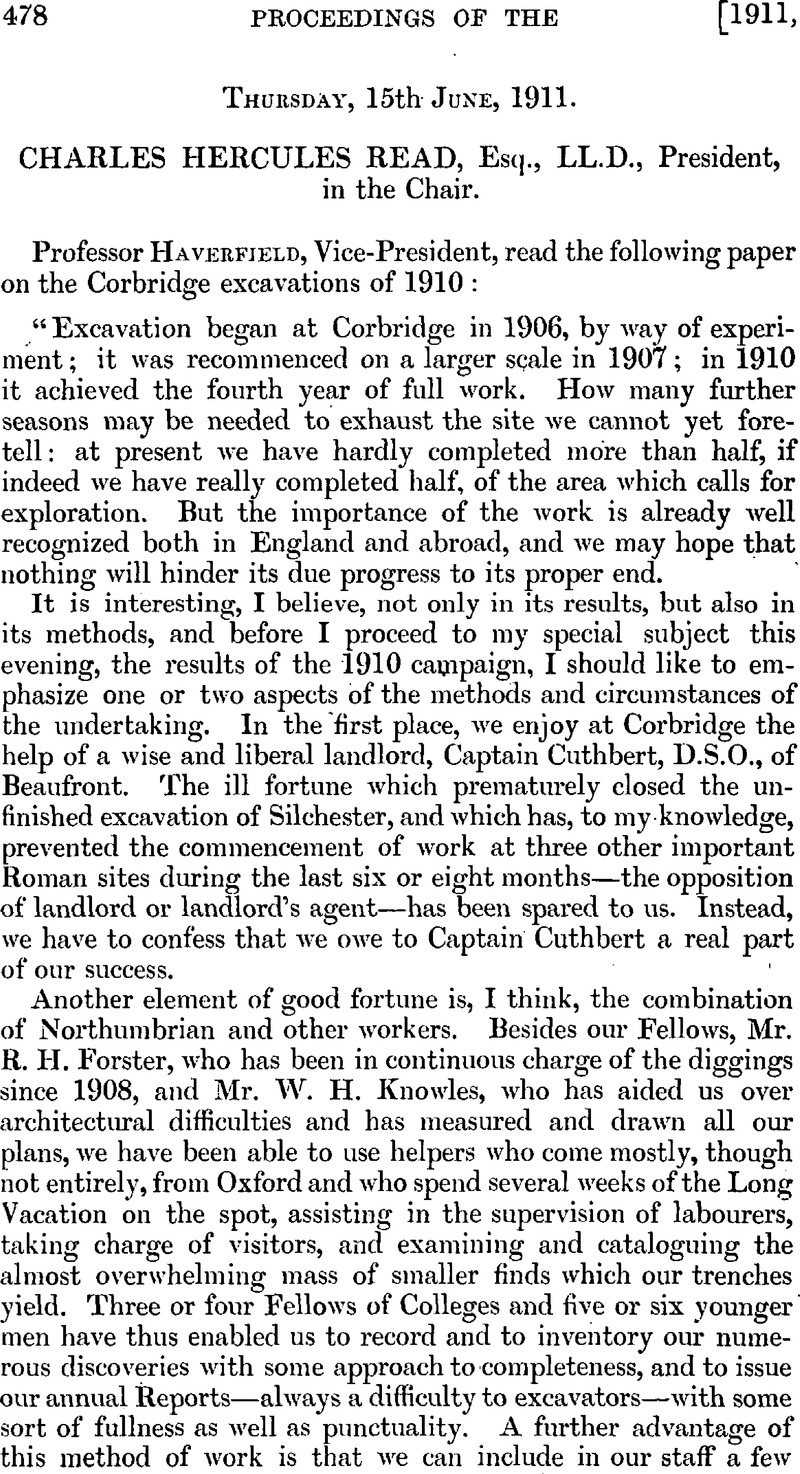No CrossRef data available.
Article contents
Thursday, 15th June, 1911
Published online by Cambridge University Press: 10 May 2010
Abstract

- Type
- Proceedings
- Information
- Copyright
- Copyright © The Society of Antiquaries of London 1911
References
page 485 note 1 The pottery-store, found in 1907, which probably belongs to the second century, may be a smaller store-building belonging to the general group of storehouses.
page 486 note 1 I except, of course, the Coventina board.
page 487 note 1 Proceedings, xxiii (1910), p. 118; Transactions of the Cymmrodorion Soc., 1908–9, p. 179 = Milit. Aspects of Roman Wales, p. 127.
page 488 note 1 The last fibula in the second row was found in or above the Refuse Ditch (plan, D), but not (as is stated incidentally in the recent vol. of the Cumberland & Westm. Arch. Soc. Proceedings xi. 442) in association with pre-Hadrianic coins and pottery.
page 489 note 1 Marshall, Catalogue of Jewellery in the British Museum (1911), no. 2853, plate lxvi. 1 owe the reference to Dr. C. H. Read, our President; Mr. Marshall has since shown me the object.
page 489 note 2 Almgren, Nordeuropüische Fibelformen, fig. 184; Lindenschmit, Alterthümer, iv, plate 65.
page 489 note 3 Osterburken, Zugmantel, etc. These examples from forts on the German Limes are of course anterior to about a. d. 250.




